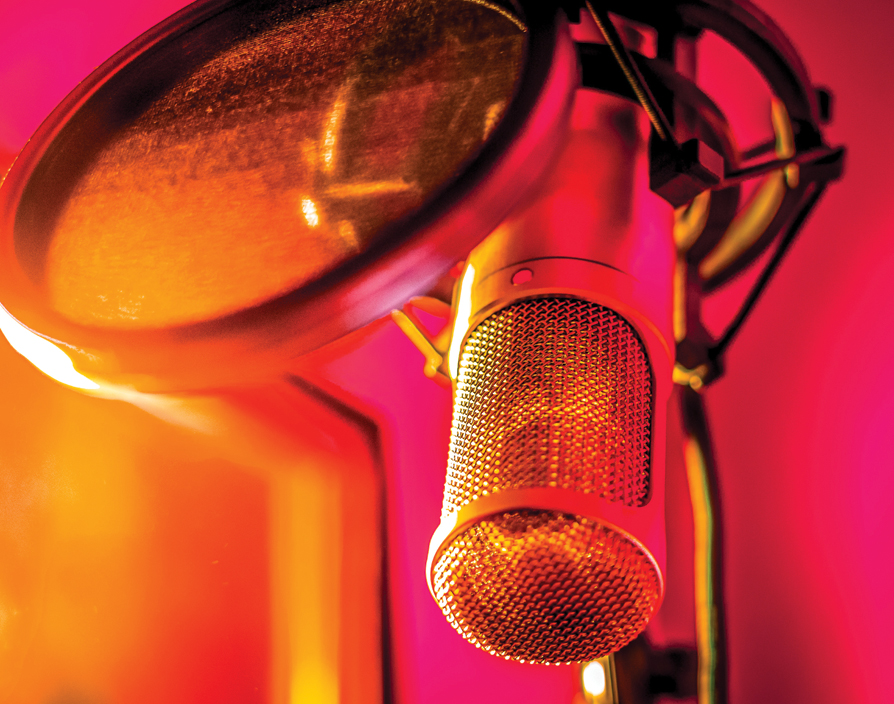Unless you’ve been living under a rock, it’s hard to escape the buzz that has built up around podcasts over the last few years. Whether it’s the cult smash Serial turning the world into amateur sleuths, S-Town beautifully championing the return of long-form narrative journalism or WTF with Marc Maron giving us intimate interviews with Bruce Springsteen, the late Robin Williams and President Obama, it’s safe to say that podcasts have come into their own. And because of that, the medium is proving a fertile ground for startups looking to use it to engage with new audiences.
Despite the huge amounts of attention it has received recently, podcasting is far from a new phenomenon: the episodic digital audio format has existed for over a decade. What has changed is the accessibility of the medium and the number of people turning fresh ideas into huge hits. “We’re seeing a whole new generation of content creators,” says Adam Martin, chief content officer of Acast, the curated platform for podcasts. “It’s not two white, male, middle-class guys in a room talking to one another: it’s far beyond that. It’s also under-represented voices like women of colour leading the charge with extraordinary shows that challenge our perceptions of the world.”
Almost anybody can create a podcast and, with so few gatekeepers, the industry is allowing a wide array of voices to express themselves in new and often quite radical ways. This can range from two muslim women talking about representations of their religion in the American media in #GoodMuslimBadMuslim to comedians’ humorous takes on their own mental health in The Hilarious World of Depression. And the sheer diversity of identities and ideas involved is drawing in new listeners in their droves. “With every new format and innovative show that comes along, they’re bringing new people and new audiences,” Martin says. “These weird outlier hits can just come out of nowhere, explode overnight and garner a significant audience.”
And inevitably this has pricked up the ears of advertisers looking to reach engaged audiences, particularly given that the very nature of podcasting means that you have a listener’s full focus. “Spotify and radio are lean-back experiences: they often play in the background whilst we get on with our day,” says Martin. “Podcasting is a lean-in experience: once I’ve put those headphones on, it has my attention and it’s a very intimate environment.” Because of this, adverts on podcasts find the ears of an already engaged audience and aren’t attempting to steal attention away from other activities. This means that ads on podcasts often hit home far more frequently than more interruptive marketing methods. “Rather than being played in commercial radio where we find it obstructive, you have this extraordinary medium that converts much better for advertisers,” Martin explains.
So if an advertiser chooses to stick a pre-recorded spot on Serial or S-Town, they can guarantee that its listeners will be paying attention. However, this doesn’t mean that using pre-recorded ads can’t sometimes be tonally tricky: the spirit of some podcasts can be more Deadwood than Downton Abbey. “At least once a day, we’ll be having a conversation and the first five minutes will be dedicated to character assassination,” says Chris Glasson, co-host of Hardcore Listing, the podcast dedicated to in-depth top-five lists. “We’re often quite rude: that’s predominantly the format.” Whether you’re listening to Harmontown or Hardcore Listing, plenty of podcasts like pushing buttons and boundaries and this can often sit uncomfortably alongside a buttoned-up ad for a mainstream brand. “You might hear me saying something really graphic and then an ad comes on for the Financial Times,” says Glasson. “People sometimes find that quite funny but it can feel disjointed.”

Fortunately, there is another option and one that proves incredibly powerful. A significant number of podcasters and advertisers now use native, host-read ads, which prevent users being yanked out of the world the podcast has created and provide a much more seamless listening experience. “The way it’s framed within the context of the podcast itself means that it flows: it doesn’t disrupt or interrupt,” says Martin. “That tonal consistency means listeners don’t find it as onerous a listening experience.” But more than just preventing awkward lurches in tone, having ads read by someone the listener has a personal relationship with and a much greater affinity for means that they are far more likely to engage with its content. “Subscribers to podcasts come back for the hosts of the show: they feel they have a personal rapport with them,” Martin says. “So when the host, that intimate voice in your ear, is the one reading that commercial message, you’re much more amenable to listening to it.”
And while brands may be tempted to send podcasters a script and insist on controlling every detail of the spot, Martin urges them to give the shows’ hosts as free a rein as possible. “The braver the brand and the more able they are to give up the commercial interpretation of their brand message to the podcaster, the better it goes,” he says. Not only are the hosts the ones that are best placed to understand what will hit home with their audiences but giving creative people free reign can yield remarkable results. For example, you would suspect that an ad on Pod Save America where the hosts joshingly reinterpreted a sponsor’s subscription flower service as a cocaine delivery service would have burned bridges with the brand forever. However, the fact that it tickled listeners’ funny bones and established the company as one that was able to laugh at itself actually seemed to pay off. “The ad stayed within the show and I suspect the brand went ‘this is way off grid for us but actually it’s working: the listeners will understand and it’s in a tone of voice that makes sense to them’,” says Martin.
Inevitably, being prepared to be much more fluid and relaxed with their brand is an idea more likely to appeal to startups than established companies. But this isn’t the only reason advertising on the medium is a good fit for startups. “Podcast listeners tend to skew better educated, they tend to have a little bit of money in their pocket, they’re all about self-learning, self-knowledge and awareness – that’s a demographic you can’t easily reach via banner or radio ads,” Martin says. “That’s why the brands that are coming into podcasting – the Squarespaces and Hello Freshes – are the ones that resonate particularly well with that kind of audience.”
However, there is still considerable variability within this demographic and startups shouldn’t necessarily just assume that advertising on big-name shows like Serial and S-Town is going to offer the best return. “Your first question always has to be: ‘am I delivering a service or product that in any way appeals to fans of that podcast?’” says Glasson. “If your startup involves thrillers or true crime books, then you can aim to sponsor those casts; if you’re selling socks then that’s more difficult.” Fortunately, the explosion of new shows the medium has seen in recent years means that there is a podcast for almost every interest – from knitting to Dungeons & Dragons – and this means targeting your ads has never been easier. “Half your work has already been done for you,” Glasson says. “If you’ve found a podcast for pre-pubescent teen boys into manga and you happen to be selling manga comics, then you pretty much know that you’re going to get a decent return on investment.”
But with the right targeting, startups can certainly make a name for themselves in the podcast space, just as Squarespace, Casper and Blue Apron have before them. And given that the medium is still developing, there’s never been a better time for entrepreneurs to get involved and stamp their mark on the industry. “It still feels like the wild west,” Martin says. “The rules haven’t been set yet, either in terms of format or ad style: it’s all there to be discovered.” ![]()
Share via:


















































